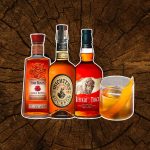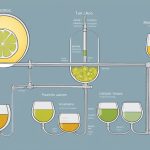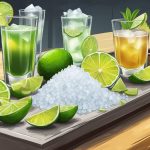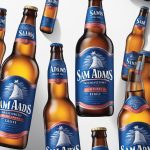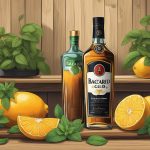As a wine enthusiast, I am thrilled to share with you my personal list of the 15 best red wines. Whether you are a connoisseur or just starting to explore the world of red wines, these selections are sure to impress your palate and leave you craving for more. So, without further ado, let’s dive into the depths of flavor and discover some incredible red wines!
1. Cabernet Sauvignon
One cannot talk about red wines without mentioning the king of grapes – Cabernet Sauvignon. With its bold flavors of blackcurrant, black cherry, and hints of herbs, this wine is unparalleled in its depth and complexity. Pair it with a juicy steak or a rich, aged cheese for a match made in heaven.
2. Pinot Noir
If elegance and finesse are what you seek, look no further than Pinot Noir. This delicate red wine boasts notes of red berries, earthy undertones, and a silky smooth texture. It pairs beautifully with roasted poultry or grilled salmon.
3. Merlot
Merlot is often referred to as the “gateway wine” for its approachable and versatile nature. With its velvety texture, plummy flavors, and hints of chocolate, it’s hard to resist a glass of Merlot. Enjoy it with roasted lamb or a hearty pasta dish.
4. Syrah/Shiraz
Syrah (also known as Shiraz) is a bold and robust red wine with complex flavors of blackberry, pepper, and smoky undertones. It pairs wonderfully with grilled meats, especially lamb and beef, and is the perfect choice for a barbecue gathering.
5. Malbec
Hailing from Argentina, Malbec has gained popularity for its full-bodied nature and rich flavors of dark fruits, chocolate, and a touch of spice. It harmonizes beautifully with grilled steaks or a hearty bowl of chili.
6. Zinfandel
Zinfandel is renowned for its jammy flavors of ripe berries, black pepper, and a hint of spice. It pairs exceptionally well with barbecue dishes, burgers, and pizza. It’s the ultimate wine for casual and relaxed gatherings.
7. Sangiovese
If Italian cuisine is your passion, then Sangiovese is the red wine for you. With its bright acidity, cherry flavors, and herbal notes, it complements tomato-based sauces, cured meats, and aged cheeses like no other wine.
8. Cabernet Franc
Often overshadowed by its more famous sibling, Cabernet Sauvignon, Cabernet Franc is a hidden gem. With its pepper, tobacco, and raspberry flavors, this wine is perfect for sipping by the fireplace or pairing with roasted vegetables.
9. Grenache/Garnacha
Grenache (also known as Garnacha) is a beautiful red wine with flavors of strawberry, raspberry, and a touch of spice. It pairs wonderfully with Mediterranean cuisine, grilled vegetables, and even spicy dishes.
10. Nebbiolo
Hailing from the Piedmont region of Italy, Nebbiolo is a wine with immense character and elegance. With its flavors of cherry, leather, and earth, it pairs exceptionally well with truffle-infused dishes, aged cheeses, and game meats.
11. Petite Sirah/Durif
Don’t let the name fool you; Petite Sirah is anything but petite in flavor. This robust and full-bodied wine offers intense flavors of blackberry, plum, and dark chocolate. It’s the perfect choice for a cozy evening indoors or paired with a juicy grilled steak.
12. Tempranillo
Hailing from Spain, Tempranillo is a versatile and food-friendly wine with flavors of cherry, blackberry, and a touch of oak. It pairs beautifully with tapas, Spanish cured meats, and paella.
13. Carmenere
Originally from Bordeaux, Carmenere found its new home in Chile and has become the country’s flagship red wine. With its deep red color, flavors of black cherry, tobacco, and a hint of green pepper, it’s a delightful accompaniment to grilled meats and hearty stews.
14. Cabernet Blend (Bordeaux Blend)
Bordeaux Blend refers to the classic blend of Cabernet Sauvignon, Merlot, Cabernet Franc, Petit Verdot, and Malbec. These wines offer complexity, structure, and a harmonious marriage of flavors. They pair beautifully with roasted meats, game dishes, and strong cheeses.
15. Rioja
From the Rioja region in Spain, Rioja wines are known for their aging potential and balanced flavors of red fruits, vanilla, and a touch of spice. They are a perfect match for Spanish cuisine, cured meats, and flavorful tapas.
These 15 red wines showcase the incredible diversity and craftsmanship found in the world of red wine. From the bold and robust to the elegant and delicate, there is something for every wine lover to explore and enjoy. So, raise a glass and savor the magic of these extraordinary red wines!
False
